In Ancient Rome, religion was an omnipresent force, intricately woven into the fabric of daily life. While the grandeur of public temples and state ceremonies is well-documented, the intimate realm of private religious practices played an equally vital role in Roman society.
Central to this was the household worship of domestic deities, known as Lares and Penates. These gods were believed to protect and bless the family home, offering a personalized spiritual experience distinct from the more formal public rites.
Within the home, families maintained small altars or shrines, which served as focal points for daily rituals and offerings. This form of worship highlighted a unique blend of personal devotion and cultural tradition, reflecting the broader religious landscape of Ancient Rome.
Role of Household Gods
In ancient Rome, the household gods known as Lares and Penates were integral to domestic life. Each served distinct roles, profoundly influencing daily activities and family well-being.
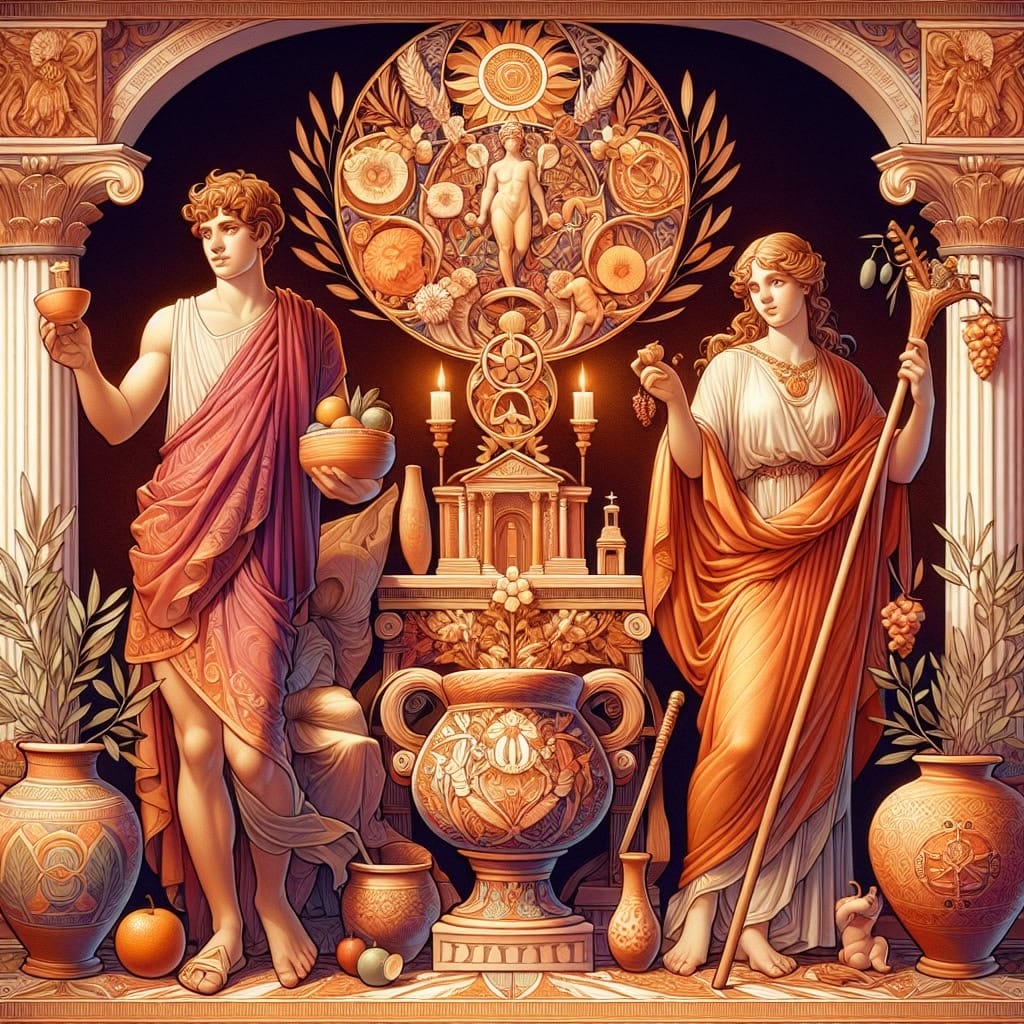
The Lares, originally guardian spirits, evolved to embody the spirits of deceased ancestors, safeguarding the household. Their presence was symbolized by statuettes kept in a special shrine called a lararium. These shrines, typically located in the atrium, were focal points for daily prayers and offerings, ensuring blessings and protection during significant family events such as birthdays and weddings.
Meanwhile, the Penates were closely linked to the pantry and kitchen, overseeing the household’s food supply. They represented prosperity and a harmonious living environment. Families honored them by setting out their statuettes during meals and offering portions of the meal as a ritual act, often burning these offerings in the hearth fire.
Together, the Lares and Penates symbolized the intimate connection between Roman families and their domestic deities. Their worship underscored the belief that these spirits directly impacted the household’s prosperity and harmony, making their veneration a cornerstone of Roman daily life.
Altars and Shrines
In Ancient Rome, household altars known as lararia were essential fixtures within the home. Typically located in the atrium or near the kitchen hearth, these altars mirrored the grandeur of public temples on a smaller scale. This placement not only facilitated ease of access but also symbolized the centrality of religious practices within daily life.

The construction of lararia allowed families to create a personal space for worship. Statuettes of deities, often mass-produced bronze figures, adorned these shrines. Such items reflected the polytheistic nature of Roman religion, with deities like the Lares and Penates taking prominent roles. These figures were believed to oversee good fortune and protection within the household.
Daily rituals at the lararium involved offerings and prayers to honor these household gods. Families set aside portions of their meals, burning them in the hearth as offerings to the Lares and Penates. Special occasions, such as birthdays or weddings, warranted additional rites, ensuring divine favor and familial prosperity.
Thus, lararia served as vital conduits between Roman families and their deities, integrating spiritual observance into the fabric of everyday life.
Public Versus Private Worship
In Ancient Rome, state religion and household worship practices differed significantly in scale and purpose. The state religion was a grand, organized system, conducting elaborate public ceremonies that involved the entire community. These rituals, led by priests and officials, aimed to maintain the pax deorum, or peace of the gods, which was crucial for the prosperity of the state. The emperor played a pivotal role in this framework, reinforcing the political structure and civic unity through religious observance.
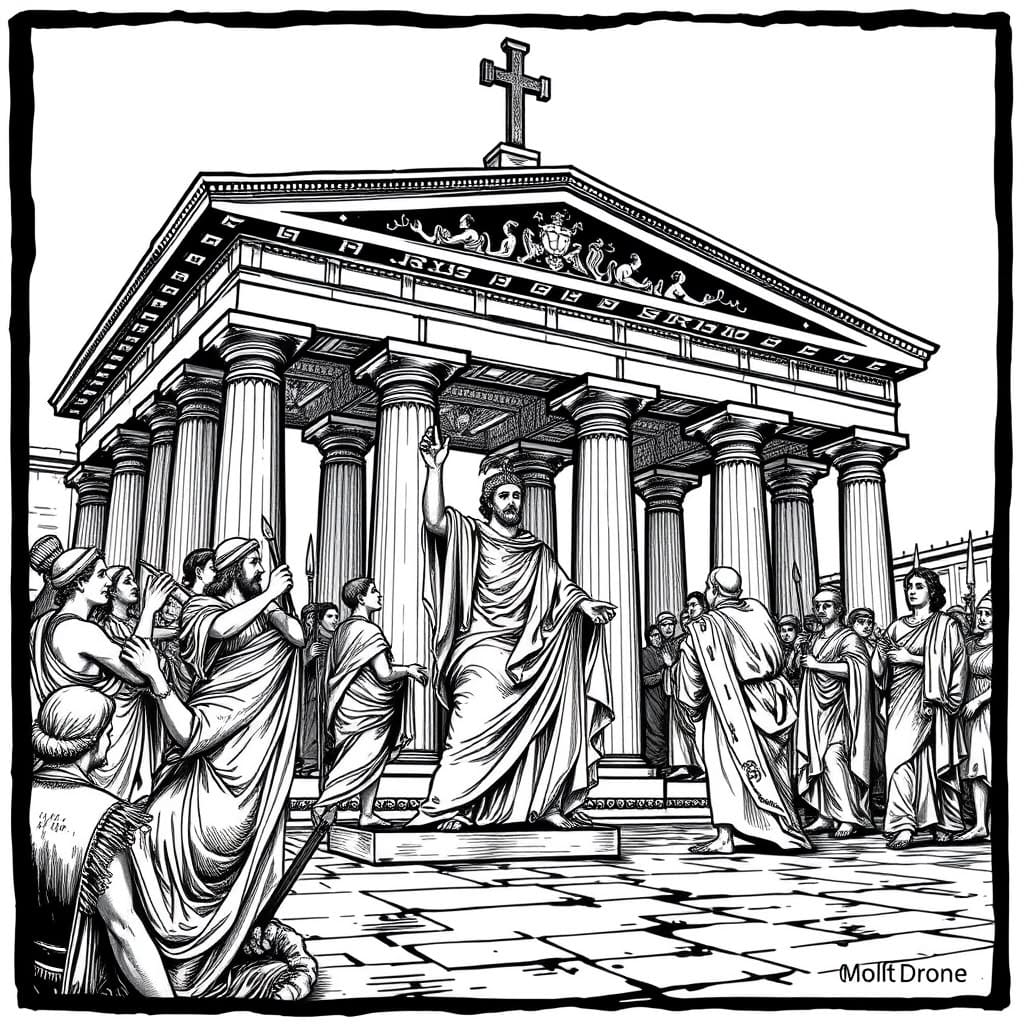
Conversely, household worship was more intimate and personal, focusing on the family. Families engaged in daily rituals dedicated to household deities such as the Lares and Penates, emphasizing personal devotion and the well-being of the domestic unit. Despite their differences, these private practices complemented state rituals. For example, offerings made at home mirrored those during public festivals, creating a seamless connection between private devotion and communal worship.
The mutual influence of domestic worship on public ceremonies is evident in community festivals like the Compitalia, where household rituals were celebrated collectively. This integration highlights how private religious practices shaped public religious identity, reinforcing societal bonds and shared values within Roman culture.
Religion in Daily Life
In Ancient Rome, religion was an integral part of daily existence, seamlessly woven into the fabric of everyday activities. From dawn until dusk, Romans engaged in religious practices that reflected their polytheistic beliefs. These practices ranged from simple offerings to household spirits, such as the Lar Familiaris, to more elaborate rituals dedicated to gods like Neptune or Ceres, depending on personal needs and circumstances.
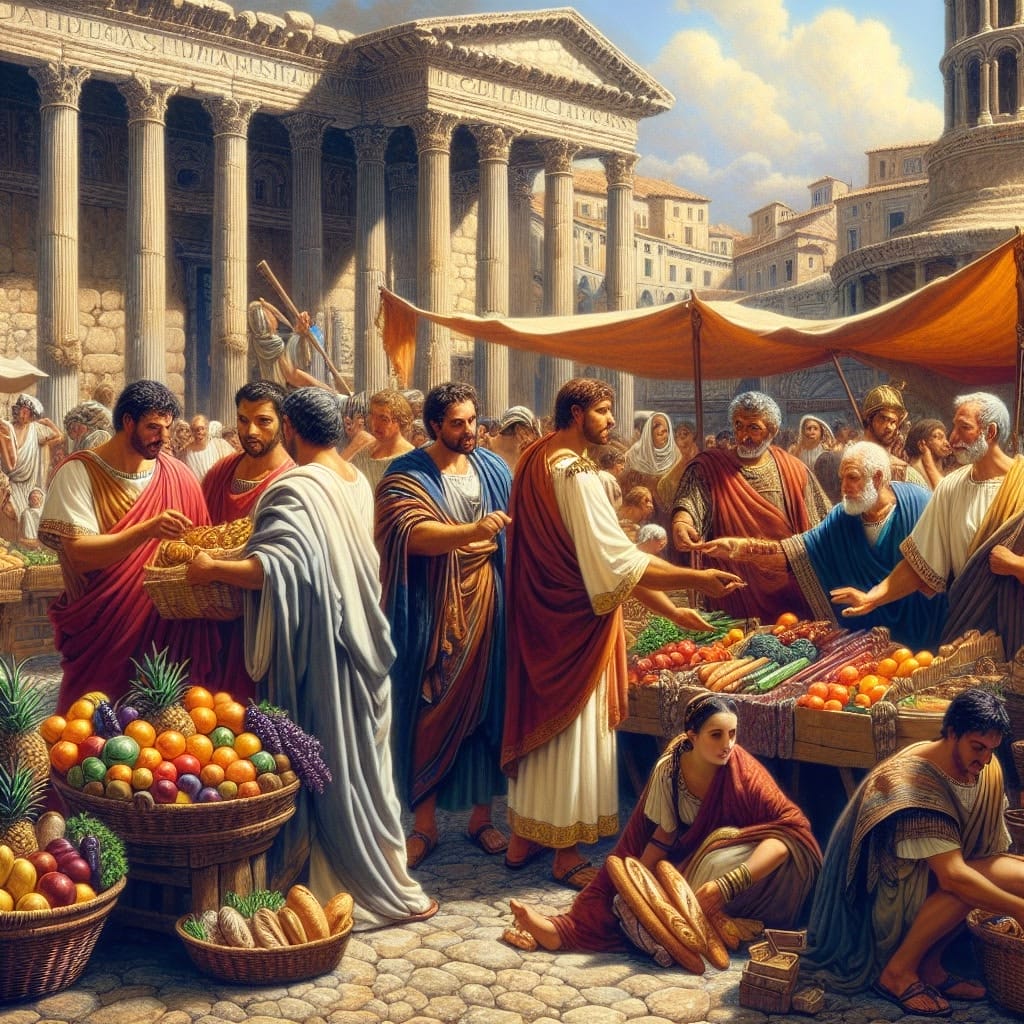
Religious observances were not confined to temples but were embedded within the home, influencing family dynamics and social structures. The paterfamilias, or head of the household, typically led these rituals, underscoring his role as both spiritual and social leader. This patriarchal structure, however, saw gradual shifts as social norms evolved, granting more independence to women and children.
Religious practices impacted social hierarchies as well, with wealthier families often conducting more elaborate ceremonies. Moreover, religion served as a tool of social cohesion, reinforcing community bonds and shared cultural identity. Through these daily rituals, Romans maintained a balance between private devotion and public duty, illustrating the profound influence of religion on both personal and societal levels.
Family Roles in Worship
In the realm of household worship in Ancient Rome, each family member held specific responsibilities, reflecting the social and religious structure of the time. The paterfamilias, or head of the household, played a central role, leading rituals and making offerings to the household gods. This patriarchal figure symbolized authority, not only in family matters but also in religious practices, as he was believed to mediate between the family and the divine.

Meanwhile, the matron of the house also had significant religious duties, particularly in maintaining the household altar and ensuring the continuity of daily rituals. Her role underscored the importance of domestic harmony and religious piety.
Children participated in these rituals too, learning the customs and prayers essential to their family’s spiritual life. Their involvement was crucial in passing down traditions and ensuring the family’s religious continuity.
Even slaves held roles in religious activities, often assisting in preparations and offerings, highlighting their integration into the household’s spiritual fabric.
Gender roles significantly influenced these responsibilities. While men conducted the major public ceremonies, women often managed the private, household rites, reflecting a division of religious duties aligned with societal norms of the period.
Materials and Symbols
In the practice of household religion in Ancient Rome, various materials played crucial roles in rituals, each imbued with symbolic significance. Typical items included incense, food offerings, and figurines.

Incense was commonly used during worship to purify the air and create a sacred atmosphere. The fragrant smoke symbolized prayers rising to the gods, acting as a bridge between the mortal and divine realms.
Food offerings, such as grains and fruits, were presented to the household gods to ensure prosperity and favor. These gifts represented the sustenance provided by the deities, reinforcing the symbiotic relationship between the divine and the family.
Figurines of gods and goddesses were also prevalent, serving as tangible representations of the divine presence within the home. These statues were often placed at household shrines, acting as focal points for worship and prayer.
Each of these materials, whether through scent, sustenance, or imagery, embodied the belief in divine protection and guidance that permeated Roman daily life, anchoring spiritual practices within the domestic sphere.
Regional and Social Variations
In Ancient Rome, household religious practices exhibited notable diversity across different regions. This diversity was largely due to the Romans’ inclination to assimilate deities from various cultures. For instance, gods from Greek, Egyptian, and Celtic origins were often integrated into regional practices, leading to unique local variations in worship. This adaptability allowed Roman religion to flourish in diverse environments, reflecting the cultural mosaic of the empire.

The impact of social class was equally significant in shaping religious customs. Wealthier families had the means to conduct more elaborate rituals, often involving intricate offerings and larger household shrines. These affluent households could afford to dedicate more resources to appease their deities, which was seen as a reflection of their social status.
In contrast, lower-class citizens engaged in simpler forms of worship, focusing on essential offerings to household spirits like the Lar Familiaris. Despite these differences, religion remained a unifying force, with all classes participating in the spiritual life of the community, underscoring its central role in Roman identity.
Evolution Over Time
The domestic worship practices of Ancient Rome underwent significant transformation over the centuries. Initially, household religion was deeply embedded in the daily routines of Roman families, with rituals and offerings made to a myriad of household deities. These practices were not static; they evolved in response to the shifting political and cultural landscape of the empire.

One of the most profound changes was the gradual integration of deities from diverse cultures, including Greek, Egyptian, and Celtic origins. This assimilation was a testament to the flexibility of Roman religion, which adapted to the expanding boundaries of the empire. As Romans encountered new cultures, they absorbed and blended these religious elements into their own domestic worship.
Political shifts also played a crucial role in this evolution. The rise of Christianity introduced new moral doctrines that began to influence traditional family values and religious practices. As Christianity gained prominence, attitudes towards traditional Roman deities shifted, leading to a decline in polytheistic practices in favor of a monotheistic approach. These changes reflected broader societal transformations, illustrating how religion was both a reflection of and a catalyst for change in Roman life.
Cultural Significance
Household religion was a cornerstone of Roman cultural identity, fostering a profound connection between the domestic sphere and the divine. In ancient Rome, every aspect of life was imbued with spirituality, as even inanimate objects were believed to possess a divine spirit, known as numen. This animistic belief system encouraged Romans to honor household spirits like the Lares and Penates, which in turn reinforced family and communal bonds and cultural continuity.
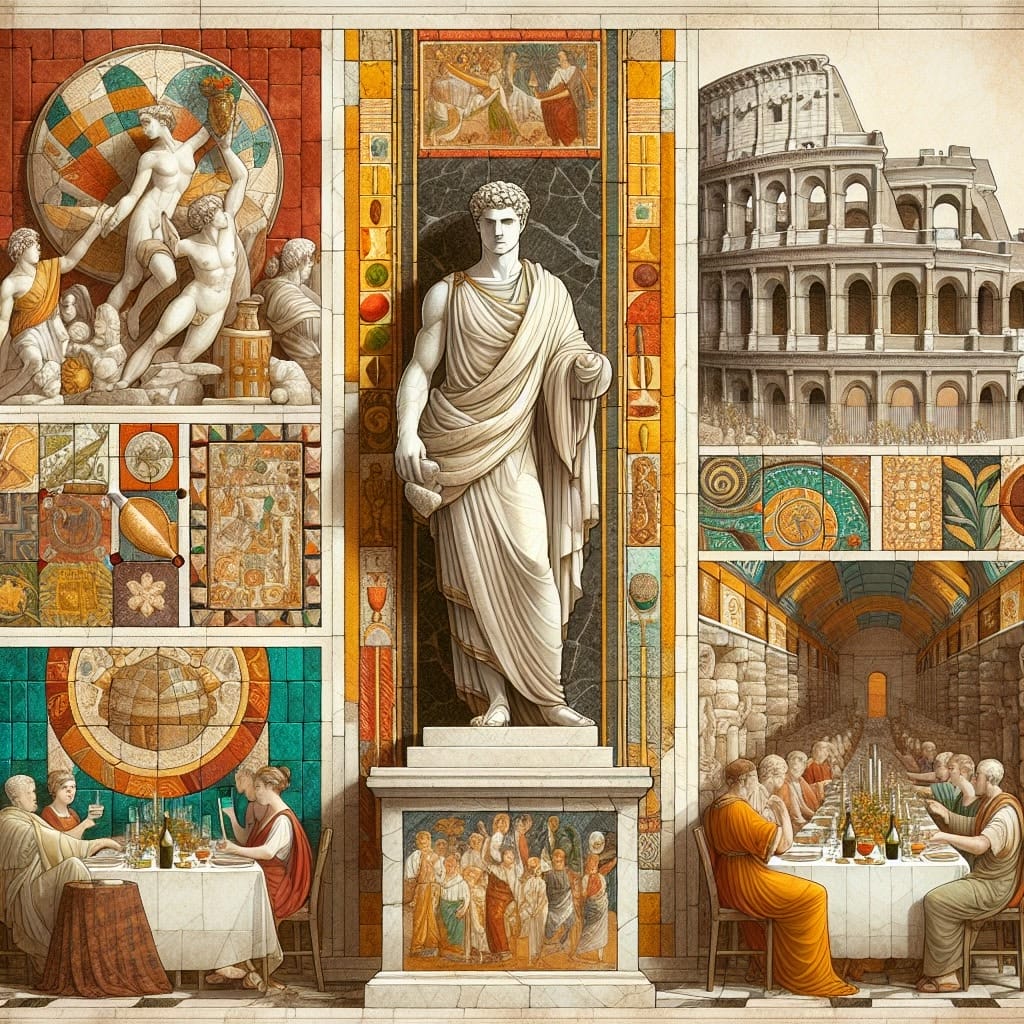
Roman art and literature subtly reflect this domestic reverence. The production of small sculptures and pottery vessels often depicted household deities, indicating a focus on domestic life. Such items were widely produced, suggesting their role in household worship. Additionally, the veristic portraiture style, with its hyper-realistic depictions, may have been driven by a desire to honor ancestors, a practice deeply enshrined in household rituals.
Moreover, philosophical works by figures like Cicero, though not explicitly focused on domestic worship, provide insights into the intertwining of public and private religious observance. This blend of cultural, artistic, and literary influences underscores the integral role that household religion played in shaping Roman identity and societal values.
Influence on Modern Traditions
The legacy of Roman household worship extends into many modern religious traditions, emphasizing the home as a spiritual center. The central role of the hearth in Roman homes, maintained by the woman of the house, parallels the importance placed on the home in contemporary religions. This focus on the hearth symbolizes warmth and protection, a concept echoed in modern spiritual practices.

Roman household deities, such as Janus and Vesta, are reflected in contemporary practices of venerating household gods or guardian spirits. This continuity underscores a shared belief in divine protection over the home, seen in various cultures today. Similarly, the lararium, a sacred space for household rituals in Roman homes, is akin to modern home altars found in Christian and Buddhist practices.
Moreover, rituals for life events in ancient Rome have influenced modern religious customs. Births, marriages, and deaths were marked with offerings to the gods, mirroring modern ceremonies that honor significant life milestones. The practice of cleansing rituals, such as purification rites, also persists, reflecting a universal understanding of spiritual purification needs. Thus, Roman household worship continues to resonate in the spiritual fabric of contemporary societies.
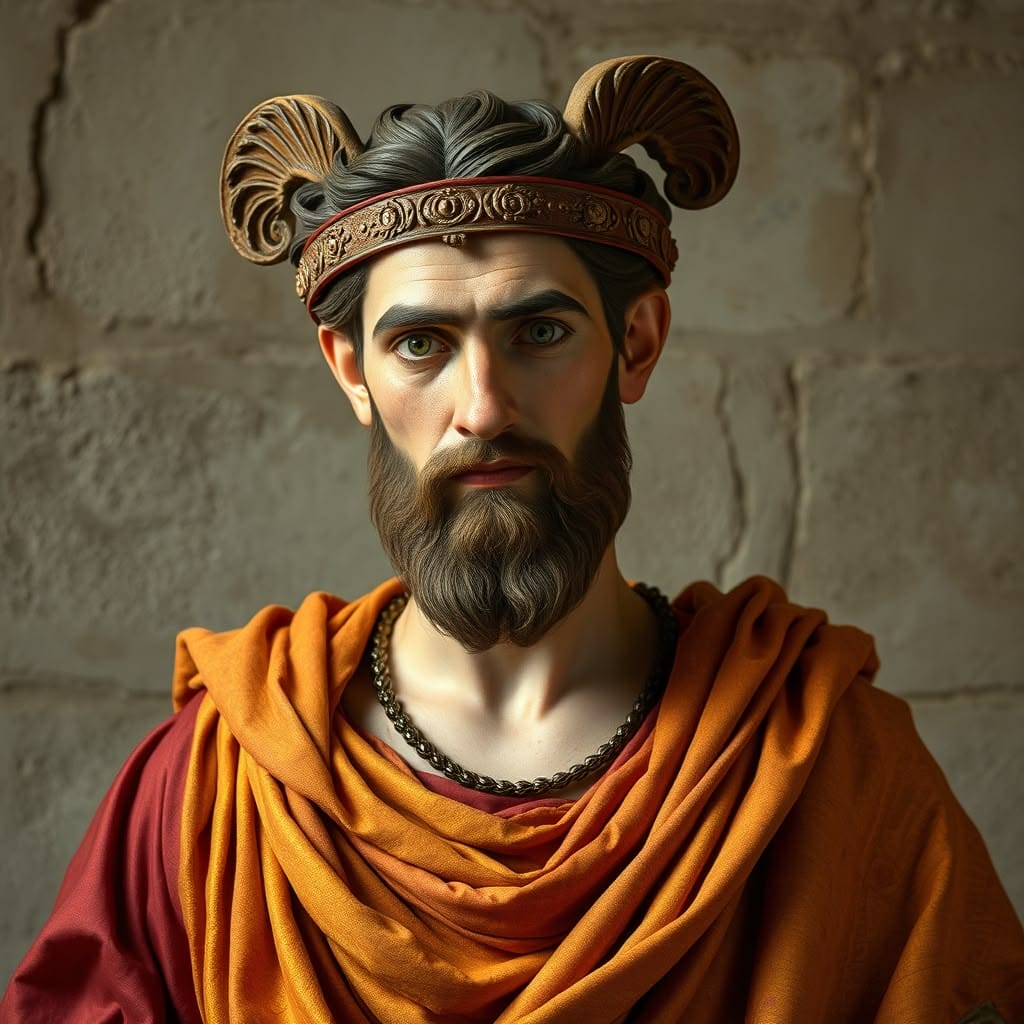
Conclusion
In exploring household religion in ancient Rome, this article highlights the central role of the hearth, the veneration of household gods like Lares and Penates, and the significance of domestic rituals. These practices underscored the integration of spirituality into daily life and familial milestones, emphasizing the divine’s protective presence within the home.
The enduring legacy of Roman household worship is evident in contemporary religious traditions, where similar practices persist across cultures. The concept of home as a sacred space continues, reflecting a deep-seated human desire for spiritual connection and protection. This continuity showcases the lasting influence of Roman rituals, bridging ancient customs with modern spiritual expressions.
Frequently Asked Questions
What were the main deities worshiped in Roman households?
In Roman households, the primary deities included Lares, the guardians of the home, and Penates, associated with the pantry and food supply. Additionally, deities like Janus and Vesta were revered, symbolizing protection and the hearth’s vital role.
How did Roman household worship differ from public religious ceremonies?
Household worship focused on personal and familial spirituality, emphasizing daily life and protection, unlike public ceremonies which honored major gods and were state-oriented. Domestic rituals were more intimate, involving offerings at the lararium, a sacred space within the home.
Did Roman household religion influence modern practices?
Yes, the concept of household altars and ancestor worship continues in many cultures today. These practices reflect Roman religious influence on contemporary traditions, highlighting the enduring legacy of domestic spirituality.
Is it true that all Romans participated in household worship?
While household worship was common, there were variations based on social class and regional differences. Wealthier families might have had more elaborate lararia and rituals, whereas others had simpler practices, reflecting the diversity within Roman society.

